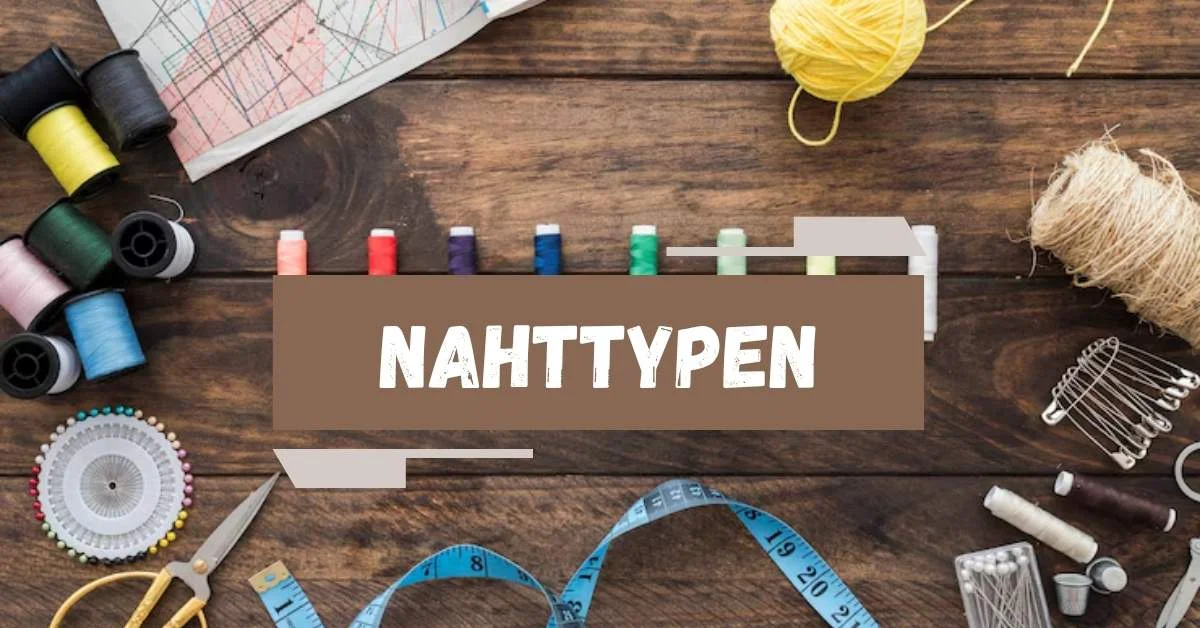In the world of textile and fashion, seams—or “Nahttypen” in German—play a fundamental role in the construction, function, and aesthetic of garments. A seam joins two or more layers of fabric together, creating shape, structure, and style. But not all seams are created equal. Each seam type serves a specific purpose, ranging from durability to design embellishment.
This article explores various Nahttypen, their characteristics, uses, and best practices in application.
The term Nahttypen refers to the different methods of joining fabrics using stitches. Each seam type has a different structure depending on its intended use—whether it needs to be invisible, strong, flexible, decorative, or suitable for certain fabrics like knits or denim.
Understanding seam types is essential for designers, tailors, pattern makers, and sewing enthusiasts, as the right seam choice affects not only the final appearance but also the wearability and longevity of a garment.
Seams can be broadly classified into:
- Simple seams (einfache Nähte)
- Flat seams (flache Nähte)
- Decorative seams (zierende Nähte)
- Specialty seams (besondere Nähte)
Let’s look into the most common seam types in more detail.
Description: This is the most basic and widely used seam. Two fabric pieces are placed right sides together and stitched, then pressed open.
Applications:
- Everyday clothing
- Lightweight to medium fabrics
Pros:
- Simple and quick
- Good for straight seams
Description: A clean and professional seam that encases raw edges within two lines of stitching. Often used when the seam is visible on the inside.
Applications:
- Sheer or lightweight fabrics
- Lingerie, blouses
Pros:
- Very neat finish
- No need for overlocking
Cons:
- Time-consuming
- Not ideal for thick fabrics
Description: One fabric edge is folded over the other and stitched down, enclosing all raw edges. Very strong and often seen on jeans.
Applications:
- Denim garments
- Sportswear and workwear
Pros:
- Durable and robust
- Professional finish
Cons:
- Bulky in thick fabrics
Description: The raw edges are enclosed with a bias tape or binding strip, creating a decorative and neat edge.
Applications:
- Unlined jackets
- High-end garments
Pros:
- Clean finish
- Decorative appeal
Description: Two parallel stitch lines on the right side of the fabric. Adds strength and a design element.
Applications:
- Jeans, shirts, activewear
Pros:
- Stylish
- Reinforces stress points
Description: Uses an overlock (serger) machine to stitch and finish raw edges simultaneously. Fast and efficient.
Applications:
- Knitwear
- Fast fashion
Pros:
- Fast construction
- Clean finish
Cons:
- Requires special machine
Description: One fabric layer overlaps the other and is stitched through both. Often used in nonwoven fabrics and leather.
Applications:
- Leatherwork
- Industrial textiles
Pros:
- Strong and simple
- Works well with non-fraying fabrics
Description: A zigzag stitch pattern that allows stretch and flexibility.
Applications:
- Stretchy fabrics like jersey
- Seam reinforcement
Pros:
- Prevents fraying
- Allows movement
Seam finishing is critical for durability and aesthetics. Some common finishes include:
- Pinking shears: Prevents fraying with zigzag cuts
- Overlocking: Finishes raw edges professionally
- Bias binding: Decorative and clean edge
- Topstitching: Reinforces and embellishes
The Nahtzugabe or seam allowance is the extra fabric given beyond the seam line to allow for sewing and adjustments. Standard seam allowance is usually 1–1.5 cm, but this varies by seam type and garment design.
Beyond the standard seams, there are specialty Nahttypen used in niche fields:
- Welt seam (Paspelnaht): Decorative piping added to seams
- Slot seam (Schlitznaht): Creates an opening or detail
- Blind seam (Blindstichnaht): Invisible from the outside
- Always press seams after stitching to flatten the fabric.
- Choose the correct needle and thread based on fabric type.
- Use interfacing in seams that need reinforcement.
- Test seams on scrap fabric before sewing the actual garment.
Seam types influence:
- Garment aesthetics: Clean finishes elevate luxury.
- Comfort and wearability: Flat seams reduce irritation.
- Strength and function: Vital for workwear or sports gear.
- Production speed: Industrial seams like overlocking save time.
In sustainable and slow fashion, visible and durable seams also reflect craftsmanship.
Understanding and mastering Nahttypen is essential in achieving professional-quality sewing. Whether you’re creating haute couture or practical activewear, the right seam ensures your garment is durable, beautiful, and functional.
By knowing when to use a French seam or a flat-felled one, and how to finish your seams neatly, you not only enhance the garment’s look but also its longevity and comfort. In the ever-evolving world of textile arts, seams may be hidden, but their importance is never out of sight.
The flat-felled seam is one of the strongest seams and is often used in jeans and workwear.
A French seam is ideal for sheer and lightweight fabrics, offering a clean and neat finish.
Not recommended. Use a zigzag or stretch stitch, or a serger/overlock machine for best results.
A seam joins fabric pieces, while a stitch is the thread loop used to make the seam.
A standard 1 to 1.5 cm seam allowance is common, but always refer to your pattern’s instructions.

